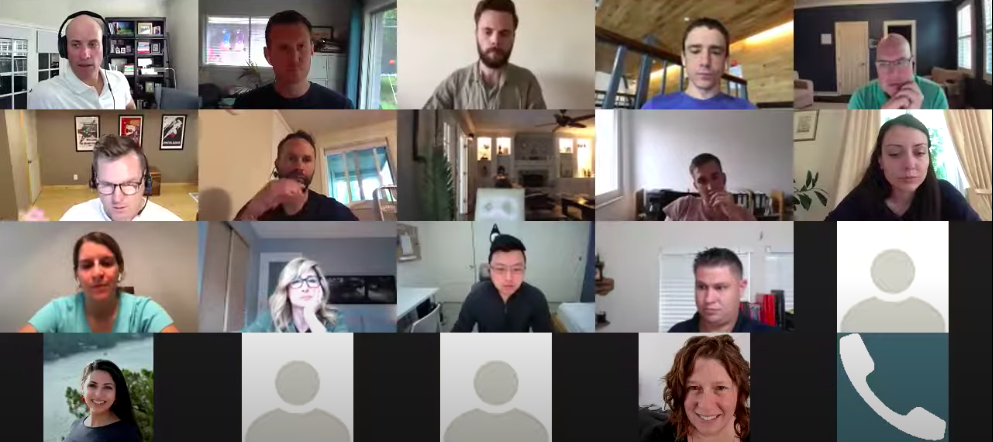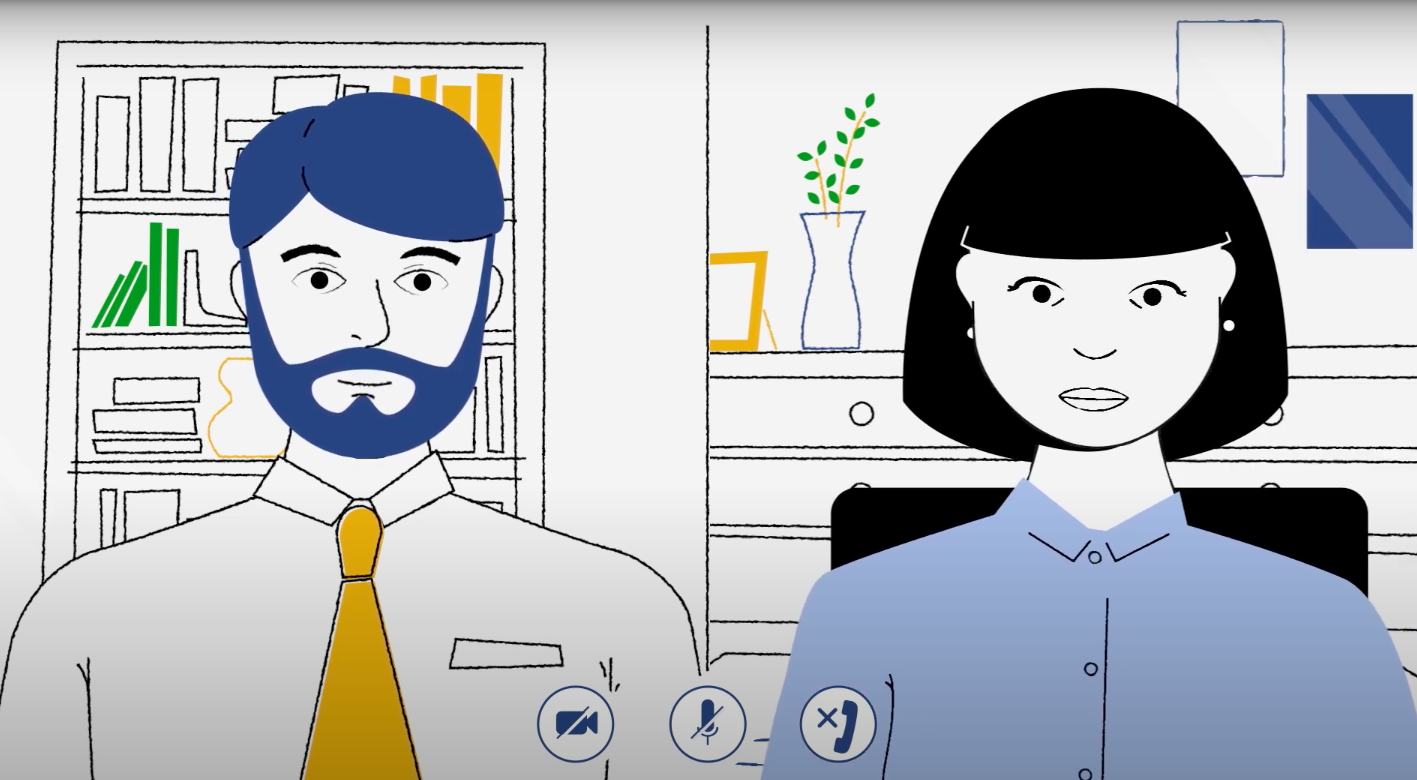Table of contents
Communication is an integral part of human interaction, whether it’s for personal or professional purposes. Over the years, technology has evolved to make communication more efficient and accessible. From letters to phone calls and emails to instant messaging, the options are endless. However, there’s one mode of communication that’s gaining popularity – video messaging. Video messaging, sometimes called explainer videos, is a form of communication that involves sending a video message to another person or group. Video messaging is a powerful tool that allows people to send and receive messages in a more personalized and engaging way. In this article, we’ll explore what video messaging is, its benefits, and examples of useful ideas for video messaging.
What is Video Messaging?
Video messaging is a form of communication that involves sending a video message to another person or group. It’s similar to leaving a voicemail, but instead of audio, you’re sending a video. Video messages can be recorded and sent instantly or scheduled to be sent at a later time. Video messaging platforms can be used on desktops or mobile devices, making it easy to send and receive messages on the go.
The Rise of Video Messaging
Video content has experienced exponential growth in recent years. With the widespread availability of high-speed internet and advancements in technology, more people now have access to platforms and apps that enable seamless video messaging. Social media platforms like TikTok, Instagram, and Snapchat have popularized short-form video messaging, allowing users to share moments from their lives in a captivating and visually appealing manner.
6 Benefits of Video Messaging
1. Personalized Communication
Video messaging allows for a more personalized form of communication. Instead of sending a generic text message or email, you can send a video message that shows your facial expressions and body language. This helps to convey emotions and tone, making the message more meaningful.
2. Remote Team Collaboration
With remote work becoming more common, video messaging has become an essential tool for team collaboration. Video messages can be used to share updates, provide feedback, and discuss project ideas. This helps to keep remote teams connected and productive.
3. Efficient Communication
Video messaging can be a more efficient way to communicate, especially when compared to long email threads or phone calls. Video messages can be shorter and more to the point, making it easier for the recipient to understand the message.
4. Increased Engagement
Video messaging is a more engaging form of communication. It captures the recipient’s attention and encourages them to respond. This can lead to more productive conversations, stronger relationships, and increased more word-of-mouth for your brand.
5. Breaking Cultural Barriers
In a globalized world, video messaging has played a crucial role in breaking down cultural barriers. It enables individuals from diverse backgrounds to communicate and connect without the constraints of language or geographical boundaries. With features like real-time translation and subtitles, video messaging platforms have made it possible for people from different parts of the world to engage in meaningful conversations, fostering understanding and empathy across cultures.
6. Empowering Marketing and Advertising
Marketers and advertisers have taken notice of the power of video messaging. In the field of marketing, it has completely changed things by allowing companies to connect with their customers on a deeper level. Video communications are particularly efficient at drawing attention and raising brand awareness due to their exceptional capacity to evoke emotions, tell tales, and produce unforgettable experiences. Video messaging has evolved into a vital tool for businesses to display their products, engage and onboard customers, from appealing commercials to enticing social media campaigns.
How Video Messaging is Revolutionizing Communication
Video messaging is also a valuable asset for entrepreneurs starting a business, allowing them to convey their vision, engage with potential clients, and establish connections that can fuel the growth of their ventures.
Personalized Sales
Video messaging is being used in sales to create personalized messages that resonate with potential customers. Sales reps can use video messages to introduce themselves, explain a product or service, and answer any questions the customer may have. This helps to build trust and establish a relationship with the customer.
Remote Education
Video messaging is being used in education to provide remote learning opportunities. Teachers can create video messages to explain concepts, provide feedback, and engage with students. This helps to make remote learning more interactive and engaging.
Virtual Events
Video messaging is being used to host virtual events such as webinars and conferences. Speakers can record their presentations and share them with attendees, making it possible to attend events from anywhere in the world.
10 Useful Ideas for Video Messaging
1. Team Meetings
Video messaging can be used for team meetings where all team members join a video conference call and can share their screens, and presentations, or discuss important topics. One of the popular tools is Microsoft Teams.

2. Virtual Interviews
Video messaging can be used to conduct virtual job interviews. It allows employers to assess the candidate’s communication skills and body language.

3. Sales Presentations
Video messaging can be used for sales presentations. Salespeople can send personalized video messages to potential clients showcasing the product or service they are offering.
4. Training and Development
Video messaging can be used for training and development sessions. Companies can create video content explaining new policies, procedures, and training modules.
5. Customer Support
Video messaging can be used for customer support. Agents can send personalized video messages to customers to resolve their issues or explain a product or service.
6. Remote Work Collaboration
Video messaging can be used for remote work collaboration. Remote teams can join video conference calls to discuss projects, share ideas, and stay connected.
7. Project Management
Video messaging can be used for project management. Project managers can send video messages to their team members to assign tasks, provide feedback, and monitor progress.
8. Marketing and Advertising
Video messaging can be used for marketing and advertising purposes. Companies can create video content for their social media channels, website, and email marketing campaigns.
9. Product Demos
Video messaging can be used for product demos. Salespeople can create personalized video messages demonstrating the features and benefits of their product.
10. Company Culture
Video messaging can be used to showcase company culture. Companies can create video content showing their workplace environment, team activities, and events.
Video Messaging Tips and Best Practices
Video messaging has become an essential tool for effective communication, whether for personal or professional purposes. To ensure that your video messages are engaging and impactful, consider the following tips and best practices:
- Plan and Prepare: Before recording your video message, take the time to plan and organize your thoughts. Outline the key points you want to cover to ensure a clear and concise message. This preparation will help you deliver your thoughts effectively and minimize any rambling or confusion.
- Keep it Concise: In today’s fast-paced world, attention spans are shorter than ever. Aim to keep your video messages concise and to the point. Avoid unnecessary tangents or lengthy explanations. By delivering your message succinctly, you increase the chances of capturing and maintaining the viewer’s interest.
- Maintain a Professional Appearance: When recording a video message for professional purposes, it’s important to present yourself in a professional manner. Dress appropriately, maintain good grooming, and ensure that the background is tidy and uncluttered. A professional appearance enhances credibility and reflects positively on your message.
- Choose a Quiet Environment: Find a quiet and controlled environment for recording your video message. Background noise can be distracting and diminish the impact of your communication. Select a location where you can minimize interruptions and create a focused atmosphere.
- Use Proper Lighting: Good lighting can significantly improve the quality of your video message. Ensure that you are well-lit and easily visible to the viewer. Natural light is often the most flattering, but if that is not possible, consider using artificial lighting sources to illuminate your face evenly.
- Maintain Eye Contact: When recording a video message, look directly into the camera lens to create the impression of eye contact. This helps establish a personal connection with the viewer, making your message more engaging and relatable. Avoid looking at yourself on the screen, as it may appear as if you’re not making direct eye contact.
- Speak Clearly and Slowly: Enunciate your words clearly and speak at a moderate pace. This allows the viewer to follow your message easily. Avoid speaking too fast or mumbling, as it can lead to misunderstandings. Articulate your words and use appropriate pauses to emphasize key points.
- Use Visual Aids and Gestures: Incorporate visual aids and gestures to enhance your video message. You can use props, slides, or hand gestures to emphasize certain points or add visual interest. However, be mindful not to overdo it, as excessive gestures can be distracting and take the focus away from your message.
- Be Authentic and Personable: Video messaging offers a unique opportunity to showcase your personality. Be genuine, authentic, and personable in your delivery. Let your natural enthusiasm and passion shine through. This humanizes your message and fosters a connection with the viewer.
- Review and Edit: After recording your video message, take the time to review it before sending or sharing it. Look for any areas where you can improve clarity or remove unnecessary elements. Edit out any mistakes or awkward pauses to ensure a polished final product.
By following these video messaging tips and best practices, you can enhance the impact of your communication, create engaging video messages, and effectively convey your thoughts and ideas to your audience.
Overcoming Challenges and Concerns about Video Messaging
While video messaging has revolutionized communication, it is not without its challenges and concerns. Addressing these obstacles is crucial to ensure a smooth and effective video messaging experience. Here are some common challenges and ways to overcome them:
- Technical Difficulties: Technical issues such as poor video quality, audio problems, or network connectivity can hinder effective video messaging. To overcome these challenges, make sure you have a stable internet connection and use reliable video messaging platforms or apps. Test your equipment, including the camera and microphone, before recording or initiating a video message. Additionally, keep software and apps updated to ensure optimal performance.
- Privacy and Security: Privacy and security concerns may arise when sharing video messages. To safeguard your privacy, use reputable video messaging platforms that prioritize data encryption and secure transmission. Be cautious about sharing sensitive information through video messages and consider using private or encrypted channels when needed. Regularly review and adjust privacy settings to control who can access your video messages.
- Bandwidth and Data Limitations: Video messaging can consume significant bandwidth and data, which may be a concern for individuals with limited internet access or data plans. To overcome this challenge, optimize video settings by adjusting video resolution and quality settings based on your available bandwidth. Consider utilizing Wi-Fi connections whenever possible to minimize data usage.
- Lack of Non-Verbal Cues: While video messaging captures visual cues, certain non-verbal cues may still be missed compared to face-to-face interactions. To compensate for this limitation, make use of facial expressions, gestures, and body language to convey emotions and engage the viewer. Maintain eye contact with the camera to establish a connection. Additionally, use clear and expressive verbal communication to ensure your message is effectively delivered.
- User Adoption and Familiarity: Not everyone may be comfortable with video messaging or have the necessary technical skills. To overcome this challenge, provide clear instructions or tutorials on how to use video messaging platforms. Offer support and assistance to those who may need help navigating the technology. Encourage users to practice and become familiar with the platform to build confidence and improve their video messaging experience.
- Cultural and Language Barriers: Video messaging may encounter cultural and language barriers, especially in global or multicultural settings. To address this challenge, use clear and concise language, avoid jargon or slang that may be unfamiliar to the recipient, and speak at a moderate pace. Consider using subtitles or captions for multilingual recipients or providing translations for key messages when necessary.
By addressing these challenges and concerns, individuals and organizations can overcome obstacles and fully leverage the power of video messaging for effective communication. Embracing technology, ensuring privacy and security, and promoting user familiarity are key steps towards maximizing the benefits of video messaging in various contexts.
The Future of Video Messaging
Future video communications has even more intriguing possibilities as technology develops. Integration of video communications with virtual and augmented reality (VR/AR) is one possible growth area. Users can converse in virtual worlds that closely resemble real-life interactions thanks to VR/AR technology, which can offer immersive and interactive experiences. Through the creation of more realistic and interesting experiences, this integration has the potential to change communication.
Furthermore, advancements in artificial intelligence (AI) and machine learning can enhance the capabilities of video messaging. AI-powered features, such as automated speech recognition and real-time language translation, can further break down language barriers and enable seamless global communication. These technologies will enable individuals and businesses to connect and collaborate effortlessly across languages and cultures.
Final Thoughts
Video messaging is a powerful tool that’s transforming the way we communicate with each other. Its benefits range from more personalized communication to increased engagement, making it an essential tool for personal and professional use. As technology continues to evolve, we can expect as technology continues to evolve, we can expect video messaging to become even more advanced and widely used.
Ssemble is an excellent video editing software that can take your video messaging to the next level. With Ssemble, you can create engaging video content that will capture your audience’s attention and help you stand out from the crowd. Whether you’re creating a sales presentation, a product demo, or a marketing video, Ssemble has all the tools you need to create professional-looking content quickly and easily. Ssemble’s intuitive interface and powerful editing features make it easy to create videos that look like they were made by a professional video editor. So if you want to take your video messaging to the next level, try Ssemble today!
FAQs
Q: How is video messaging different from traditional text-based communication? A: Video messaging allows for visual and non-verbal communication, capturing facial expressions, body language, and tone of voice, which are often lost in text-based communication.
Q: Can video messaging be used for business purposes? A: Absolutely! Video messaging is widely used in business for internal communication, customer engagement, marketing, and brand promotion.
Q: Is video messaging suitable for educational settings? A: Yes, video messaging is particularly beneficial for education, enabling remote learning, interactive lessons, and effective student-teacher communication.
Q: What does the future hold for video messaging? A: The future of video messaging includes integration with virtual and augmented reality, advancements in AI, and enhanced global communication capabilities.








